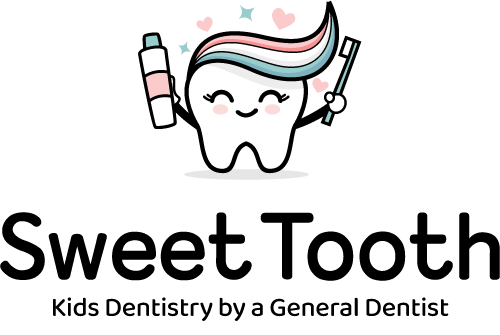Dental plaque is a common issue that affects many children’s oral health. This sticky film of bacteria can result in tooth decay, cavities, and gum disease if not managed appropriately. This article delves into the definition of dental plaque, its causes, and the potential impacts on your child’s teeth.
It also provides insights on preventing and treating dental plaque, emphasizing the importance of maintaining proper oral hygiene practices and adopting healthy dietary habits.
Understanding Dental Plaque
The significance of dental plaque lies in its potential to cause serious dental issues. Dental plaque is a sticky, colorless film of bacteria that forms on teeth and gums.
What is Dental Plaque?
Dental plaque is a biofilm or mass of bacteria that adhere to surfaces in the mouth, forming a sticky, colorless film on teeth. This bacterial biofilm, known as plaque, is created when bacteria in the mouth combine with proteins and other molecules in saliva to form a thin film called the pellicle on teeth.
The bacteria in plaque then produce acids that damage tooth enamel and lead to cavities. The formation of plaque is dependent on the oral microbiome, a diverse community of microorganisms in the mouth that provides an environment for bacteria to thrive. Common types of bacteria found in dental plaque include Streptococcus mutans, Porphyromonas gingivalis, and Actinomyces.
Causes of Dental Plaque
There are multiple causes of dental plaque, with inadequate dental hygiene and dietary habits being significant contributors. Plaque bacteria thrive in an environment with food particles and sugars.
Poor Oral Hygiene
The main reason for dental plaque formation is poor oral hygiene, often resulting from insufficient brushing and flossing. If dental plaque is not regularly removed, bacteria in the mouth feed on food particles and produce a sticky film known as plaque. Failure to remove plaque through proper brushing and flossing can cause it to harden into tartar, increasing the likelihood of harmful bacteria accumulation. Over time, the build-up of plaque and tartar can lead to gum disease, cavities, and other oral health issues. Therefore, it is crucial to maintain a thorough daily brushing and flossing routine to prevent plaque formation and promote good oral health.
Dietary Habits
Dietary habits, particularly the consumption of sugary foods and beverages, play a significant role in the development of dental plaque. When sugar is consumed, it reacts with bacteria in the oral cavity to produce acids. These acids lower the pH of saliva, causing enamel to soften and creating a rough surface that is more susceptible to erosion and decay. Plaque bacteria thrive on sugars, promoting their rapid growth. As bacteria multiply excessively, plaque forms – a yellowish sticky bacterial film that adheres to teeth and hardens into tartar if not removed through proper brushing and flossing.
Therefore, managing sugar intake and maintaining good oral hygiene are essential practices to prevent plaque formation and enhance overall oral health.
Effects of Dental Plaque on Children’s Teeth
If not properly managed, dental plaque can have severe effects on children’s teeth, leading to tooth decay, cavities, and gum disease. Plaque buildup can erode tooth enamel and cause lasting damage to a child’s oral health.
Tooth Decay and Cavities
Tooth decay and cavities occur due to the accumulation of dental plaque on the tooth’s surface, creating an environment for oral bacteria to thrive by feeding on sugars and generating acids that erode the tooth enamel through a process called demineralization. The erosion of enamel by acids produced by oral bacteria results in the formation of pits or holes in teeth, known as cavities.
Untreated cavities will continue to demineralize the tooth and progress to deeper layers, leading to pain and infection. Preventing tooth decay and cavities relies on reducing dental plaque build-up through good oral hygiene practices, including regular brushing and flossing, as well as minimizing sugar intake.
Gum Disease
Gum disease encompasses gingivitis and periodontitis, stemming from untreated dental plaque as the most common cause. It manifests as gum inflammation and damage to the periodontium. Dental plaque, a soft film of bacteria on teeth and along the gumline, releases toxins that irritate the gums, leading to redness, swelling, and easy bleeding – indicative of early gum inflammation. Without treatment, gum inflammation can progress to periodontitis, a more severe form of gum disease characterized by bone and supporting structure damage. Symptoms of periodontitis may include receding gums, loose teeth, and potential bone loss.
Preventing Dental Plaque in Children
Ensuring overall oral health in children involves preventing dental plaque through the enforcement of proper oral hygiene and dietary practices. Pediatric dentistry plays a crucial role in educating children and parents about these techniques.
Proper Oral Hygiene Practices
Maintaining healthy oral hygiene habits, such as regular brushing, flossing, and using mouthwash, is essential for plaque removal and preserving oral health. Brushing teeth with fluoride toothpaste twice a day is crucial for eliminating plaque accumulation on teeth. Opting for a soft-bristled brush and employing gentle, circular strokes ensures thorough cleaning of all tooth surfaces.
Flossing plays a vital role in removing plaque from between teeth and beneath the gum line, areas inaccessible to a toothbrush, where plaque buildup can lead to gum issues. Incorporating mouthwash into the oral hygiene routine offers added protection by eliminating bacteria and yeast responsible for plaque and gum disease.
As a result, there is reduced plaque formation, decreased risk of tooth decay, and lower incidence of gum disease. To enhance plaque removal, interdental brushes or oral irrigating devices can also be utilized alongside brushing and flossing.
Healthy Dietary Habits
Healthy dietary habits, such as reducing sugar intake and using sugar-free gum, have a significant positive impact on oral health and lower the risk factors for developing dental caries. By avoiding sugary snacks and beverages, individuals can decrease dental plaque buildup, a leading factor in the development of dental caries and periodontal disease.
Sugar-free gum promotes oral health by stimulating saliva production, which helps neutralize harmful acids in the mouth and prevent bacteria from adhering to teeth. Establishing these habits early in children can support proper oral development and decrease the need for more extensive dental procedures later in life.
Treating and Removing Dental Plaque
Proper dental care involves key components such as the treatment and removal of dental plaque. This includes professional dental cleanings and regular oral care practices by individuals. Pediatric oral care focuses on preventive measures and treatments to maintain children’s teeth free of plaque.
Dental Cleaning and Procedures
Regular professional dental cleanings and procedures, thorough oral examinations, and the use of plaque staining solutions are essential for effective plaque removal and overall good dental health.
Regular dental check-ups play a vital role in the early detection of dental problems like cavities, gum disease, and oral cancer.
During these check-ups, dental professionals can offer personalized advice on the most suitable oral hygiene practices, such as proper brushing and flossing techniques.
Advanced cleaning procedures like scaling and root planing help in deep cleaning below the gumline, reducing the buildup of tartar and bacteria.
By attending these appointments regularly, individuals can maintain good dental health and prevent potential complications.
At-Home Remedies
Proper tooth brushing techniques, mouth rinse use, and effective dental flossing can help manage dental plaque effectively at home. A modern tool that aids in maintaining oral hygiene is plaque disclosure tablets. These tablets function by coloring areas where plaque is present, enabling individuals to pinpoint areas that require extra attention during their oral care routine.
Using these tablets occasionally ensures thorough plaque removal and prevents plaque buildup. Regular use of plaque disclosure tablets serves as a visual guide to assist individuals in enhancing their brushing and flossing methods. Incorporating plaque disclosure tablets into your oral care regimen can result in enhanced overall oral health.


